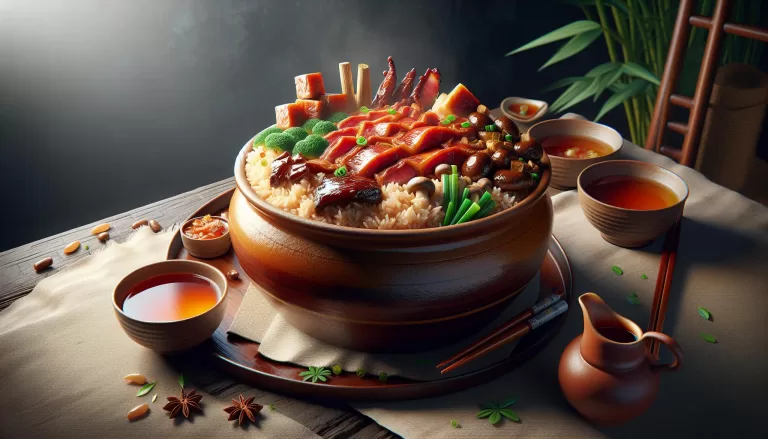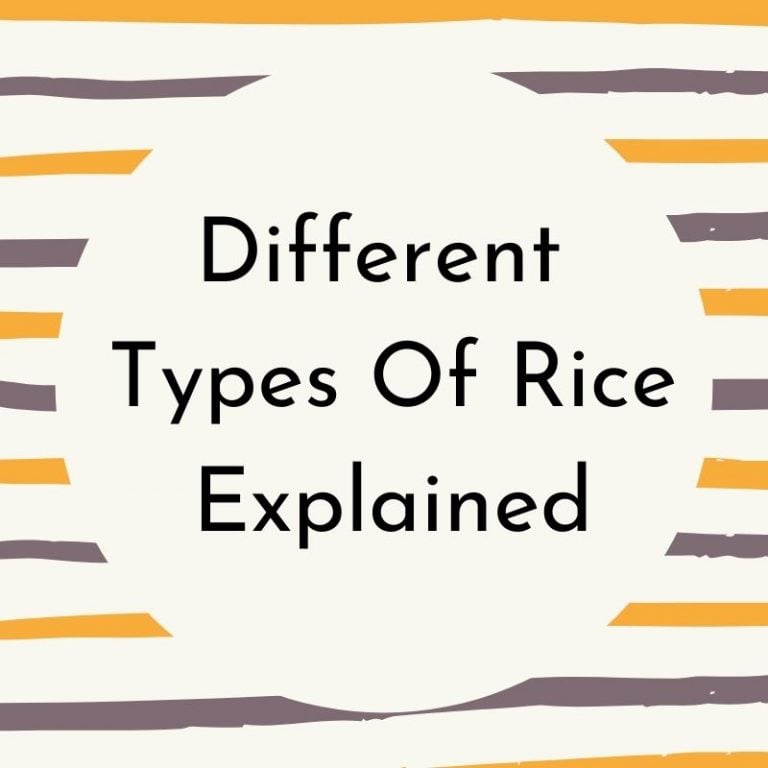Beijing Beef vs Mongolian Beef: What Is The Difference?
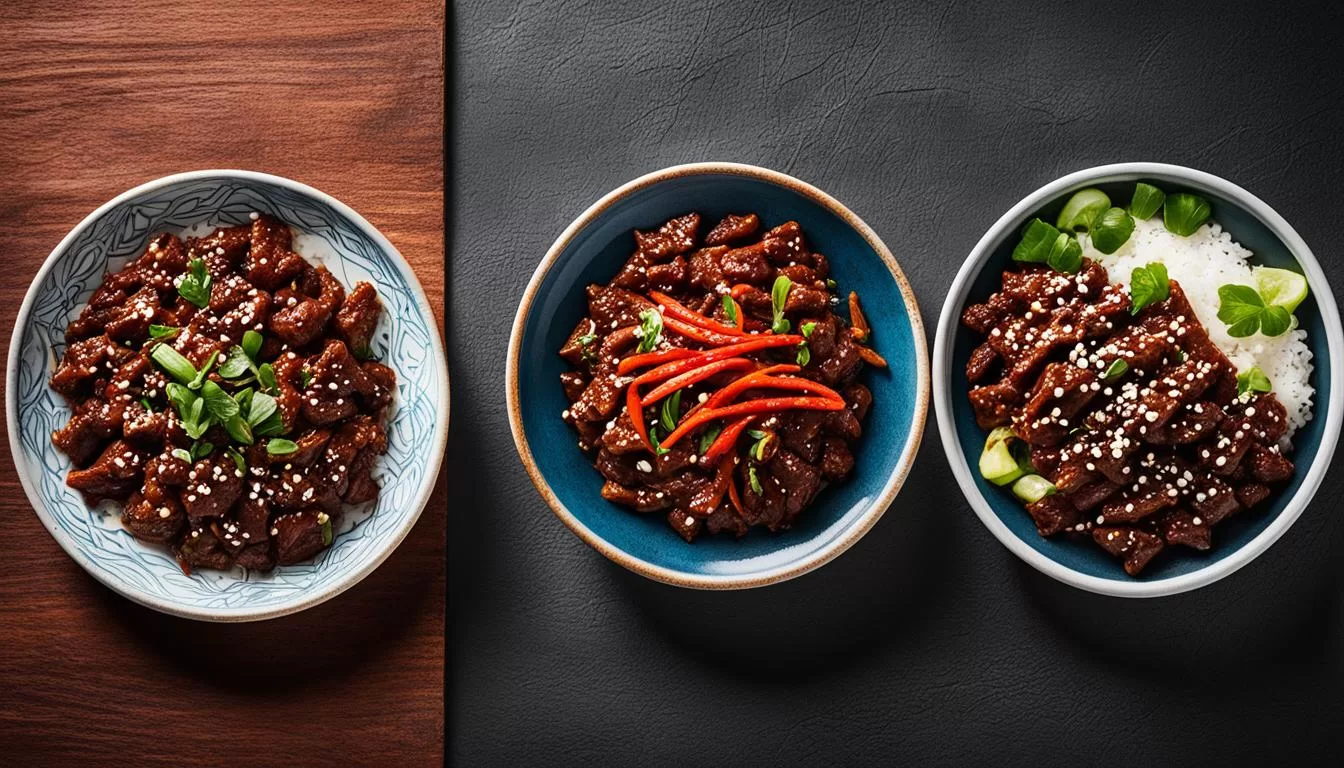
When it comes to Chinese cuisine, two dishes often leave taste buds craving for more – Beijing beef and Mongolian beef. But have you ever wondered about the differences between these tantalizing dishes? Are they just variations of the same flavor or do they offer distinct culinary experiences? Let’s dive deeper into the world of Beijing beef and Mongolian beef to unravel their unique characteristics and challenge common beliefs.
Origins: Beijing Beef vs Mongolian Beef
Beijing beef and Mongolian beef, two popular dishes in Chinese cuisine, have distinct origins that reflect different regional influences and culinary styles. Let’s explore the roots of these delectable dishes:
Origins of Beijing Beef
Beijing beef originated in Beijing, China, as a testament to the city’s rich culinary traditions. It showcases the flavors and techniques that have been passed down through generations in the capital city. This dish combines the bold and vibrant elements of Beijing-style cooking, offering a delightful culinary experience.
Origins of Mongolian Beef
Contrary to its name, Mongolian beef does not have its roots in Mongolian cuisine. Instead, it is believed to have originated in Taiwan. Despite its origin story, Mongolian beef has gained popularity not only in North America but also across the globe. This flavorful dish captivates taste buds with its unique blend of ingredients and cooking methods.
| Beijing Beef | Mongolian Beef |
|---|---|
| Originated in Beijing, China | Believed to have originated in Taiwan |
| Reflects Beijing’s culinary traditions | Despite the name, not tied to Mongolian cuisine |
| Exhibits bold flavors and vibrant cooking techniques | Offers a unique blend of ingredients and cooking methods |
Beijing beef and Mongolian beef may share commonalities in their popularity, but their distinct origins provide a glimpse into the rich tapestry of Chinese culinary heritage. Each dish tells a unique story through flavors, techniques, and influences.
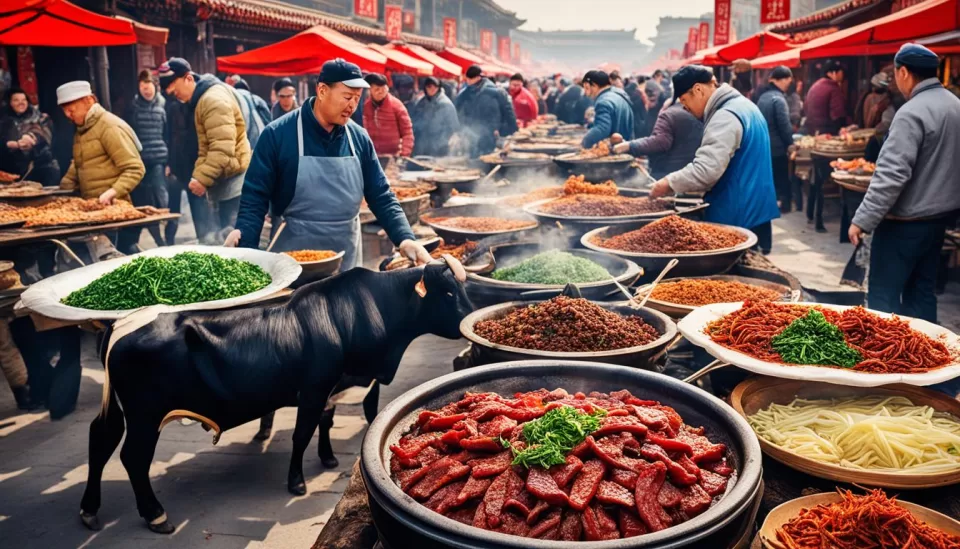
Continue reading to delve deeper into the ingredients, taste profiles, and processing methods that set Beijing beef and Mongolian beef apart.
Ingredients: Beijing Beef vs Mongolian Beef
The ingredients used in Beijing beef and Mongolian beef are similar, with variations that contribute to their distinct flavors. Let’s take a closer look at the ingredients for each dish:
Beijing Beef Ingredients
Beijing beef typically includes the following ingredients:
| Ingredients | Quantity |
|---|---|
| Thinly sliced flank steak | 12 oz |
| Soy sauce | 2 tbsp |
| Rice wine | 2 tbsp |
| Oyster sauce | 1 tbsp |
| Vinegar | 1 tbsp |
| Ketchup | 1 tbsp |
| Sambal | 1 tsp |
| Sesame oil | 1 tsp |
| Ginger (minced) | 1 tbsp |
| Onion (sliced) | 1 medium |
| Bell peppers (sliced) | 2 |
| Scallions (chopped) | 3 |
These ingredients combine to create Beijing beef’s bold and flavorful taste.
Mongolian Beef Ingredients
Mongolian beef features the following ingredients:
| Ingredients | Quantity |
|---|---|
| Thinly sliced flank steak | 12 oz |
| Soy sauce | 3 tbsp |
| Hoisin sauce | 2 tbsp |
| Oyster sauce | 1 tbsp |
| Rice wine | 2 tbsp |
| Vinegar | 1 tbsp |
| Sesame oil | 1 tsp |
| Onions (sliced) | 2 medium |
| Bell peppers (sliced) | 2 |
| Scallions (chopped) | 3 |
The combination of these ingredients results in the distinctive flavors of Mongolian beef.
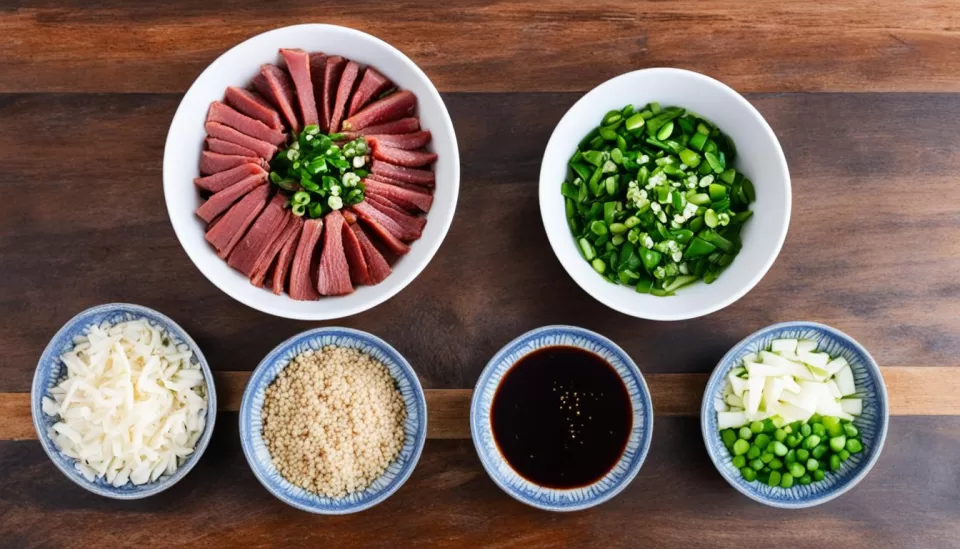
Taste: Beijing Beef vs Mongolian Beef
In this section, we’ll explore the flavors of Beijing beef and the tastes of Mongolian beef, two delicious dishes with distinct profiles. Whether you prefer a sweet and salty combination with a spicy kick or a milder, sweeter flavor with a savory sauce, both dishes offer delightful taste experiences that cater to different preferences.
Beijing beef, with its slightly sweet and salty flavor profile, tantalizes the taste buds. The addition of ketchup and sambal brings a spicy and sour undertone to the dish, creating a perfect balance of flavors. The beef itself is chewy, providing a satisfying texture, while the vegetables, such as bell peppers and onions, contribute a crunchy element. Every bite of Beijing beef is a flavorful journey that showcases the diversity of Chinese cuisine.
Mongolian beef, on the other hand, offers a milder taste with a focus on sweetness and richness. The sauce, made with ingredients like soy sauce, hoisin sauce, and rice wine, adds depth and complexity to the dish. The beef in Mongolian beef is tender, making it a pleasure to savor. The combination of flavors in each bite creates a harmonious blend that is sure to please those who appreciate a more subtle taste.
Now, let’s take a look at a table that summarizes the flavors of Beijing beef and Mongolian beef:
| Beijing Beef | Mongolian Beef |
|---|---|
| Slightly sweet and salty | Milder and sweeter |
| Spicy and sour undertone | Savory sauce |
| Chewy beef | Tender beef |
| Crunchy vegetables | Rich sauce |
In summary, the flavors of Beijing beef and the tastes of Mongolian beef offer unique experiences for those who indulge in Chinese cuisine. The combination of spices, sauces, and textures in each dish provides a range of flavors that cater to different palates. Whether you prefer the bold and spicy notes of Beijing beef or the comforting and flavorful qualities of Mongolian beef, both dishes are sure to satisfy your cravings and leave you wanting more.
Processing: Beijing Beef vs Mongolian Beef
The processing methods for Beijing beef and Mongolian beef contribute to their distinct textures. Beijing beef is prepared by frying the thinly sliced flank steak with eggs and cornstarch, creating a crispy exterior that gives it a chewier texture. After frying, the beef is then stir-fried with onions, ginger, and garlic, enhancing the flavors. The sauce, consisting of soy sauce, rice wine, oyster sauce, vinegar, ketchup, sambal, and sesame oil, is thickened with cornstarch before being drizzled over the dish. This combination of frying, stir-frying, and thickening results in Beijing beef’s unique texture and flavor profile.
In contrast, Mongolian beef focuses on achieving a tender and flavorful texture. Before stir-frying, baking soda is often added to the flank steak, which helps to tenderize the meat and infuse it with flavor. The beef is then stir-fried with bell peppers, onions, and scallions, creating a harmonious blend of vegetables. The sweet and savory sauce, comprising soy sauce, hoisin sauce, oyster sauce, rice wine, vinegar, and sesame oil, adds richness and depth to the dish. The combination of the tenderized meat, fresh vegetables, and well-balanced sauce contributes to Mongolian beef’s tender texture and delicious taste.
Comparison of Processing Methods
| Processing Method | Beijing Beef | Mongolian Beef |
|---|---|---|
| Frying | Yes | No |
| Stir-frying | Yes | Yes |
| Thickening Sauce | Yes (with cornstarch) | No |
| Tenderizing Meat | No | Yes (with baking soda) |
As illustrated in the table, the processing methods for Beijing beef and Mongolian beef differ in terms of frying, stir-frying, thickening of the sauce, and tenderizing the meat. These variations contribute to the unique textures and flavors of each dish, allowing food enthusiasts to enjoy a diverse range of Chinese cuisine.
Beijing Beef at Panda Express
Panda Express, a popular Chinese-American fast-food chain, offers its version of Beijing beef on its menu. Panda Express Beijing Beef features flank steak, onions, and bell peppers in a hoisin sauce. This dish has become one of the chain’s signature offerings and showcases the flavors and techniques of Beijing-style cuisine in an accessible and convenient format.
Conclusion: Beijing Beef vs Mongolian Beef
Beijing beef and Mongolian beef are both delicious dishes that showcase the diversity of Chinese cuisine. These two popular dishes offer unique flavors, textures, and culinary experiences. While Beijing beef is known for its spicier taste and chewier texture, Mongolian beef delights with its tender meat and sweet and savory sauce.
The distinctions between Beijing beef and Mongolian beef go beyond their taste and texture. The origins, ingredients, and processing methods of these dishes further contribute to their individuality. Whether you prefer the bold and spicy flavors of Beijing beef or the comforting and flavorful notes of Mongolian beef, both options are sure to satisfy your cravings for Chinese cuisine.
Exploring the world of Beijing beef and Mongolian beef provides an opportunity to appreciate the nuances and regional influences within Chinese culinary traditions. Whether you enjoy savoring the vibrant flavors of Beijing beef or indulging in the tender goodness of Mongolian beef, these dishes offer a delightful way to experience and appreciate the rich tapestry of Chinese cuisine.
